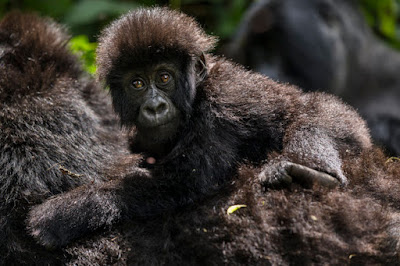Humans are literally eating the animals out of existence.
An Ohio zoo’s decision to shoot and kill a gorilla after a child fell into its enclosure has sparked
a widespread debate about animal rights. But the heavy attention on the actions of a single zoo has obscured the real threat facing the great apes: us.
The death of the critically endangered western lowland gorilla, named Harambe, may result in criminal charges against the child’s family for negligence. The mother of the 4-year-old boy has been defended, as well as eviscerated over the incident. And activists have re-upped fierce campaigns against zoos and their captive residents.
But the blitz defensive Facebook posts and opinion pieces seems to have overshadowed — or perhaps suppressed — the very real fact that humans have long been driving every last gorilla in the wild to the brink of extinction.
In fact, humanity is essentially eating gorillas out of existence.
By far the biggest threat to all four subspecies of gorilla is the illegal hunting and consumption of the creatures for bushmeat in horrifically poor regions of Africa. A report released in April by the Wildlife Conservation Society found people openly talk about hunting the animals, regardless of conservation status, because they’re too poor to eat ethically sourced meat.
“Great apes are among the more highly prized species because of their relatively large size,” the report’s authors write.
Because of this horrifying trend, all remaining gorillas are now at a high risk of extinction as are eastern chimpanzees. The one subspecies not yet listed as critically endangered, the Grauer's gorilla, has seen a 77 percent decline in population in 20 years.
Now there are just 3,800 left.
This isn’t an unknown topic, and perhaps the widest-spread information about the plight came with the release of the documentary “Virunga,” distributed by Netflix and nominated for an Oscar last year. The film is named after a national park in central Africa, which is home to about half of the world's 700 remaining mountain gorillas. The film features the ongoing fight of park rangers to protect the famed animals as poachers and developers vie for natural resources in the Democratic Republic of the Congo.
In a bit of good news, the mountain gorilla subspecies is the only one actually on the rise, according to the Dian Fossey Gorilla Fund International, thanks in large part to intense conservation efforts spurred by such heavy scrutiny. For other populations, Grauer’s included, the luck ends there.
Despite these very real threats, media coverage often fails to mention the plight Harambe’s relatives face every day. Many other gorillas are snared, shot and hunted regularly, and there are only half-baked plans to set up defensive forces to protect them.
People will continue calling for criminal charges to be brought against the zoo employees tasked with defending the child. They’ll question the motives of his parents and analyze video footage that may or may not show whether Harambe was acting aggressively.
But there is perhaps a better way to spend that time and effort: become a champion for the animals still remaining in the wild, fighting for survival in a world set on their destruction.
If efforts to protect the gorillas of Virunga hold true, there is very real success to be had in an effort to save these creatures, an outcome many species have yet to be afforded.
Groups like the WCS, the World Wildlife Fund and primatologist Dian Fossey’s eponymous organisation are actively working to save these animals. Because, as cliche as it may be, there is still time to help.
But that won’t be the case forever.
Nick Visser

No comments:
Post a Comment